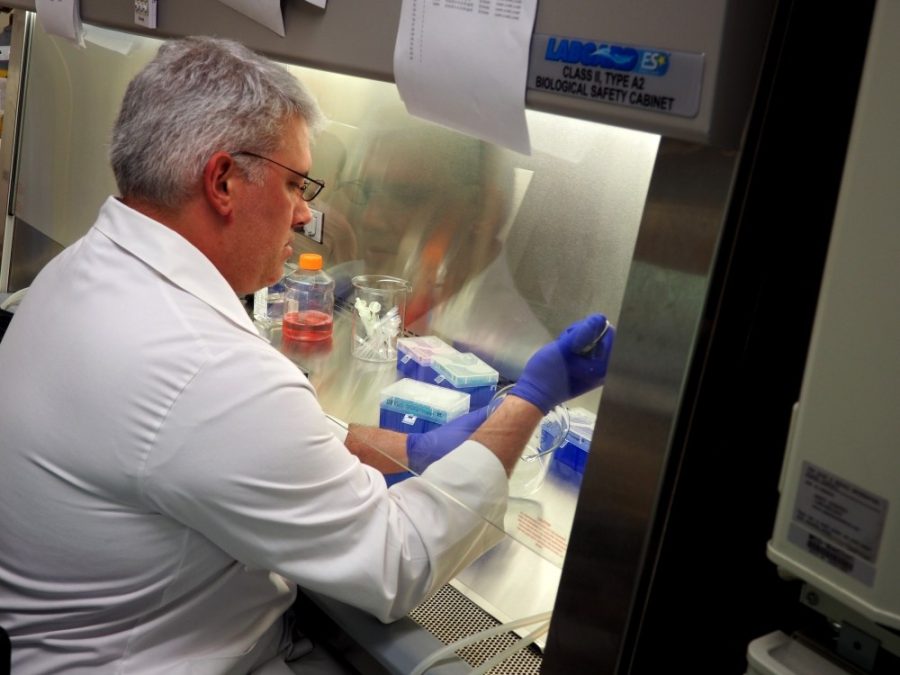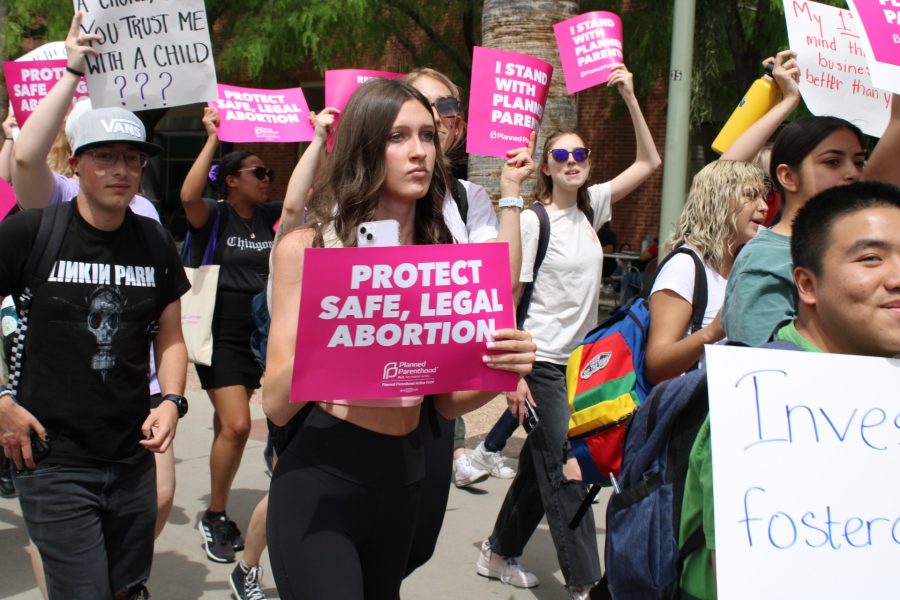UA’s Valley Fever Center For Excellence, or VFCE, received a $2.7 million National Institute of Health grant to study the genetics behind why only a small portion of the population responds severely to valley fever.
Valley fever, a respiratory infection caused by the fungus Coccidioides spp., is endemic to southern Arizona and southern California, and infects 50,000 people per year. Roughly two-thirds of cases are in Arizona. The VFCE is an ABOR-approved center researching the disease.
While most people only notice moderate symptoms like fever, joint aches, chest pain and coughs, the disease can be more serious for 1 in 200 people, said John Galgiani, UA professor of medicine and director of the VFCE.
For those with disseminating valley fever, the disease spreads from the lungs into the bloodstream, then to other parts of the body, leading to life-threatening complications.
Galgiani said patients afflicted by disseminating disease likely are genetically different. However, that difference is not a random mutation, but rather a DNA base difference called a single nucleotide polymorphism.
“That means in some proportion of the population, you’d find that base not being there or being different, so it’s not really a mutation, it’s just part of the sequence of that gene in some individuals,” Galgiani said.
RELATED: Arizonans are particularly susceptible to valley fever
To test that possibility, the genome of different people who have had acute or disseminating valley fever will be sequenced.
“We’re trying to understand the inner relationship between different genes and the little differences in those inner relationships, which add up in pathways to a bad immune response or not enough of a immune response,” Galgiani said.
One way to test that is by changing a base in a mouse, and seeing how that changes the mouse’s response to both valley fever and the vaccine.
Marc Orbach, associate professor of plant pathology and microbiology, developed the vaccine. He said the goal is to prevent dissemination by inducing the host to respond to the infection early.
“We don’t understand all the details of how the vaccine works, but from what we do know, the fungus initiates the parasitic phase, so it starts to form spherules, and in almost all cases those spherules lyse prematurely,” Orbach said. “So instead of forming healthy spherules with thick walls, they form misshapen spherules with very thin walls.”
The vaccine is created using a mutant strain of Valley Fever, delta CPS1, that is unable to survive long. After 7 to 10 days, mice completely clear the infection, according to Orbach, and then can survive the wild strain of valley fever.
RELATED: UA scientists help update national valley fever guidelines
Orbach said one particular gene change in humans has been associated with dissemination, a STAT1 mutation, affecting signal transduction and transcription.
“It’s a pretty important gene,” Orbach said. “We’ll be able to test whether mice that have this STAT1 mutation will be able to be vaccinated against infection. If that turns out to be the case, then it will be even stronger support for the idea that a vaccine could help not just those who are at risk, but those who are at greatest risk.”
The grant is for four years, of $2.7 million total, with most funding coming to UA and the rest remaining with the NIH, which Galgiani said is a rare collaboration. The NIH is split into two programs, the intramural, which houses the researchers and doctors, and the extramural, which gives out research funding.
This grant is an intramural-extramural collaborative award, so UA and the VFCE will collaborate with Dr. Steven Holland of the NIH.
“This grant is unusual in that it connects the two parts, using extramural money to foster collaboration with the intramural part,” Galgiani said. “It’s bringing the resources of the NIH on the East coast to bear on a problem in the Southwest.”
Galgiani sees the grant as recognition of the VFCE.
“The fact that we were successful in getting this award speaks to the strength of having a center where you have people talking to each other,” Galgiani said. “The center served to create a hub, where the conversations could start.”
Follow Marissa Heffernan on Twitter.









